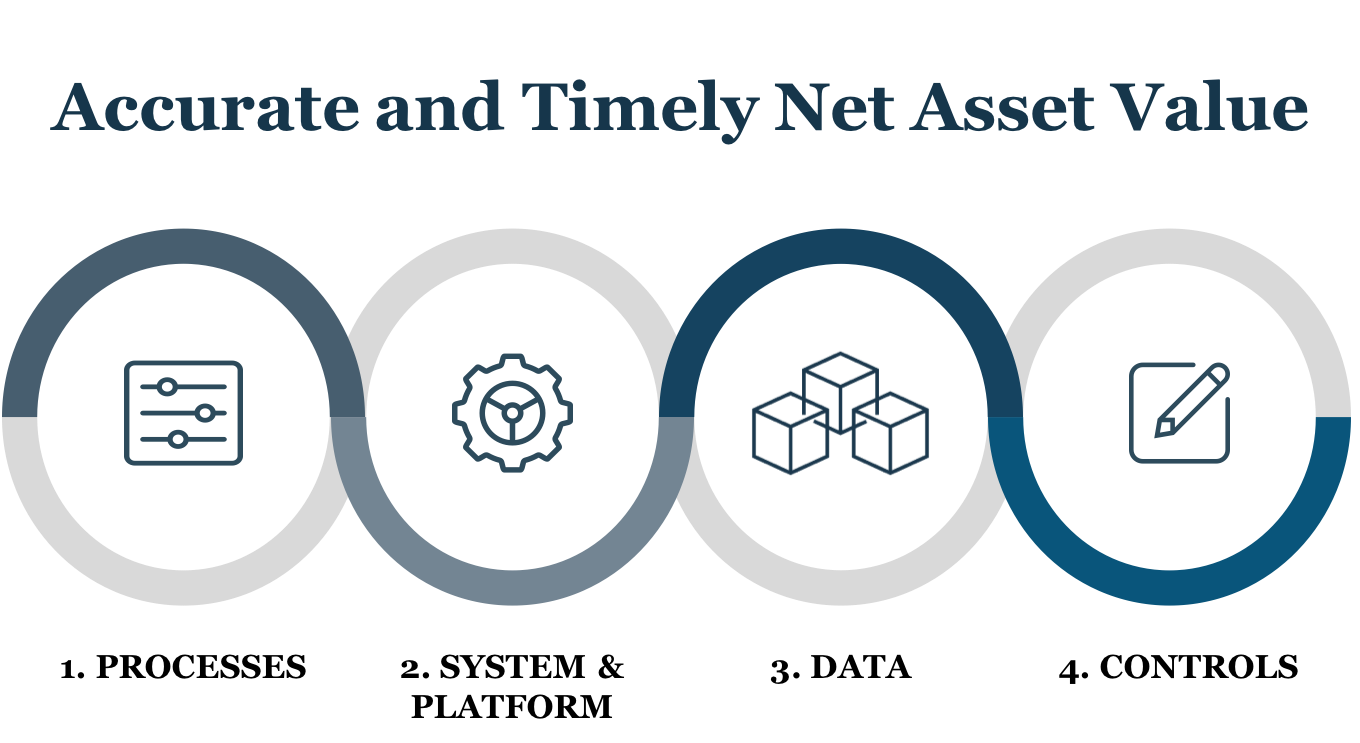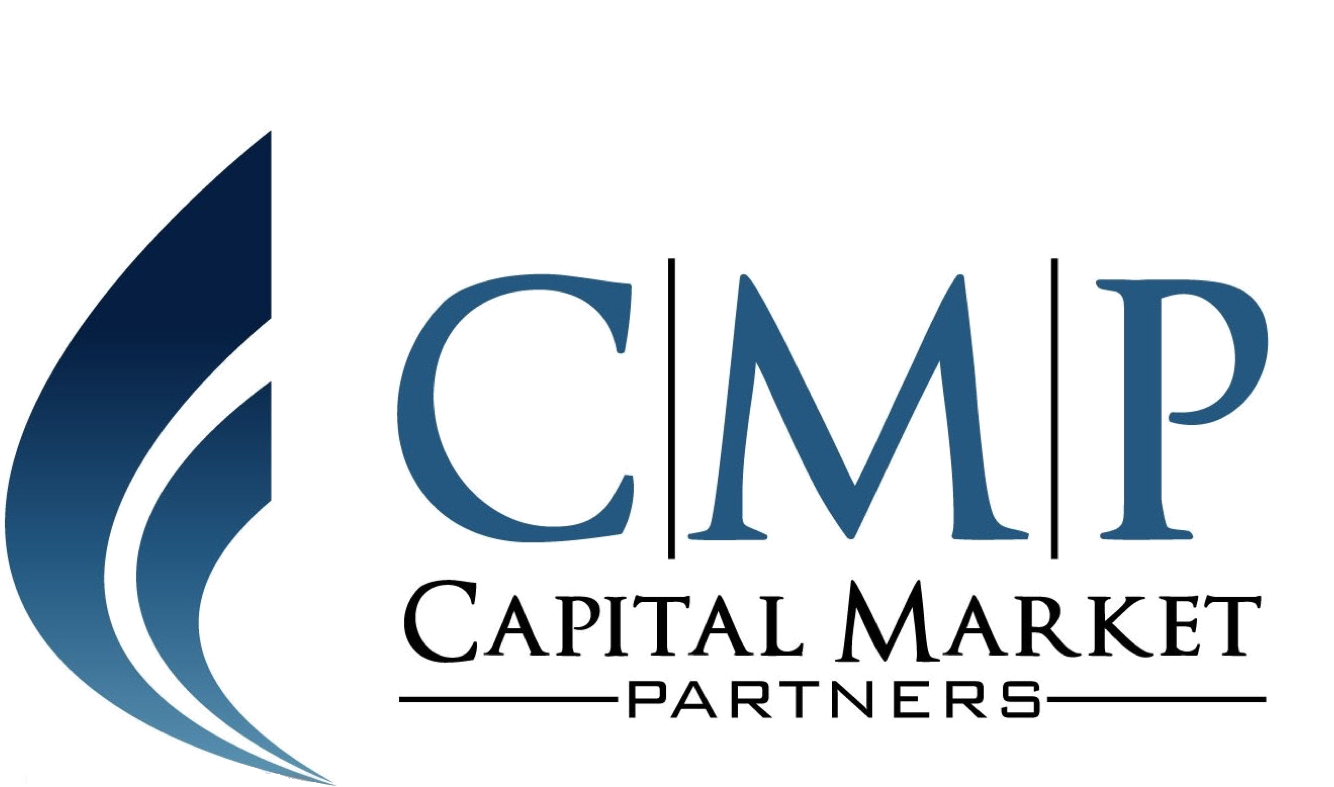What Does it Take to Ensure Accurate and Timely NAV?
Net Asset Value (NAV) is value per share of a mutual fund or an exchange-traded fund (ETF) on a specific date or time. For fund managers, this means that accurate prices must be provided on a daily basis in a highly regulated and fast-moving environment – this post goes through four steps that elaborate on how to ensure accurate and timely NAV in relation to processes, system and platform, data and controls.
By Dea Lillelund Larsen, Manager & Peter Jensen, Manager I The 28th of August 2018
Highly Regulated and Fast-moving Environment
By using the principle of fund accounting and daily assessment of the Net Asset Value (NAV), fund managers allow clients to invest in or withdraw money from funds regularly. This means that fund managers on a daily basis must provide accurate prices and accounting of the invested portfolio, based on current market prices.
Provision of high-quality NAV figures in a highly regulated and fast-moving environment, requires ongoing assessment of the efficiency, the timing and the interdependency of the processes flow.
 1. Processes – Minimizing Change and Time Consumption
1. Processes – Minimizing Change and Time Consumption
Critical factors in the process vary depending on fund structure, assets invested in, trading frequency etc.
To increase efficiency and to mitigate risk (e.g. operational, reputational and compliance risks), it is crucial for fund managers to prepare comprehensive and proper business analyses in order to determine:
- Which efforts should be made to have a robust IT setup in place
- Sufficient working procedures like internal control framework – including quantitative and qualitative controls
- Data validation procedures and reconciliations.
All the mentioned elements have that in common, that they should be scalable so that any changes in business – trading volume, number of funds, asset types etc., can be handled with a minimum of changes in processes and time consumption throughout the entire process.
SEE ALSO: Insourcing vs. Outsourcing – Do it for the Right Reasons
2. System & Platform – Selection of Portfolio System and IT Platform
A central decision for the fund manager is the selection of portfolio system and IT platform.
The system should be able to cope with both the present business demands as well as upcoming changes in business, products, regulatory requirements etc.
Therefore, the system performance must:
- Have a stable and reliable functionality
- Be sufficient – process times should not be the reason to inappropriately delays
- Meet compliance requirements, such as audit trail and other demands given by audit, authorities etc.
3. Data – Deliveries, Import and Control
NAV calculation often requires large amounts of data deliveries from external sources and automated import of those to the system.
This could be:
- Trade processing
- Static data
- Market prices
- Reconciliation data and benchmark
These require a number of quantitative controls to be in place – controls that to some extend can be carried out (semi-)automatically.
The controls could be whether incoming data has been received, correctness of formats, whether the data import to the portfolio system has been completed successfully and so forth. Also, you might need to be able to lock specific data imports, e.g. around period closures (month-end and year-end), if you need the data to be fixed for a period longer than in the normal import flow.
The quantitative controls should – if possible – have taken place at an early stage before qualitative controls.
4. Controls – Setting Up an Internal Control Framework
When setting up and optimizing an effective internal control framework focus should be on the entire flow, including all functions/persons involved in and effecting the NAV process.
This may include both assessment of working procedures, but also analysis of the current use of available tools in portfolio systems to clarify optimal use and potential gains by automation of the process.
A critical factor when taking these measures is also to consider qualitative procedures (e.g. price controls) influencing accuracy of the NAV figures and consequently the quality in both internal and external fund reporting.
SEE ALSO: Moving Towards Continuous Delivery and a Better Agile State
Collecting Components to Ensure Contingency in the NAV Cycle
Fund administration encounters a range of complex components with a high degree of automation to ensure contingency in the NAV cycle, hence all aspects of the operating model should be tailored to fit business strategy, technology and external factors.
Considering the number of functions and personnel involved, it is often valuable to have an external analyst review of the end-to-end process to ensure focus on accurate and timely NAV.
 Dea Lillelund Larsen, Manager
Dea Lillelund Larsen, Manager
Dea Lillelund Larsen has been working in the financial sector since 2006. Where she has achieved extensive experience and insights in the capital markets area. She has both management and operational experience within accounting. Additionally, Dea has experience with implementation, such as Fund Accounting and SimCorp Dimension.

Peter Jensen, Manager
Peter Jensen has worked within the financial sector, nationally as well as internationally, since 1986, where he first started in the Danish banking industry. Peter has extensive experience from a wide range of projects and different responsibilities in system implementation and accounting, but his primary focus has been on markets and asset management, where Peter creates bridges between IT, business and finance.



